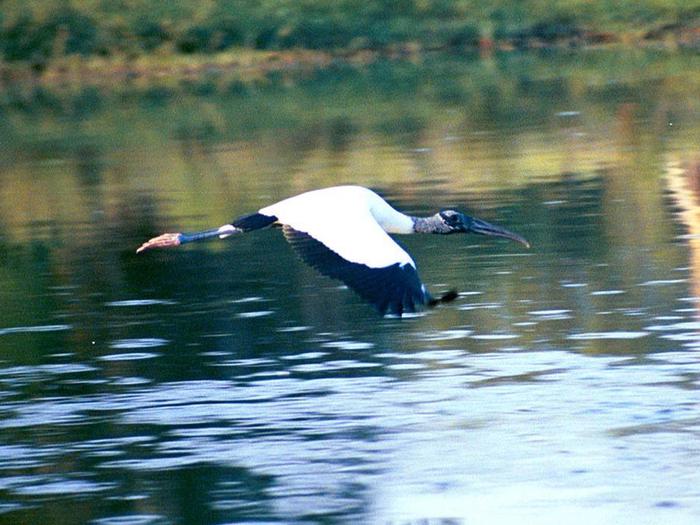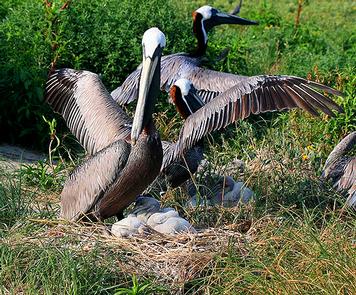Pelican Island National Wildlife Refuge
Fish and Wildlife Service, Florida.
Pelican Island National Wildlife Refuge (NWR) is situated in the Indian River Lagoon estuary, which runs 156 miles down Florida’s eastern coastline. Thousands of species inhabit the brackish Indian River Lagoon, including the federally protected green sea turtle, Florida manatee, and wood stork, as well as state protected threatened species such as the reddish egret and tricolor heron. During spring and fall migration, birds rest and refuel at Pelican Island NWR as they follow the Indian River Lagoon south to the Everglades or to the Caribbean. The upland habitat is also home to gopher tortoises, bobcats and snakes, as well as mangroves, live oaks, and gumbo limbo.
Pelican Island, the nation’s most historic refuge, and the surrounding area was first inhabited by the Ais people between 2000 BCE and the mid-1600. Then, in 1903, President Theodore Roosevelt’s executive order designated the island as the nation’s first national wildlife refuge for the protection of nesting birds. Pelican Island was established as wilderness by Congress in 1970.
Because of its status as the first federal area set aside specifically to protect wildlife, the Refuge was designated a National Historic Landmark by the Secretary of the Interior in 1963. Thirty years later in 1993, Pelican Island Refuge was recognized by the Ramsar Convention on Wetlands as a Wetland of International Importance for its support of endangered species and large assemblages of migratory birds, as well as for its support of 10 Pelican Island National Wildlife Refuge species at critical stages in their biological development. In 2000, the Refuge was listed as a candidate Marine Protected Area for its protection of estuarine waters.
Established: 1970
Size: 3 acres
The Wilderness Act of 1964 created the National Wilderness Preservation System "in order to assure that an increasing population, accompanied by expanding settlement and growing mechanization, does not occupy and modify all areas in the United States, and its possession, leaving no lands designated for preservation and protection in their natural condition..."
The Pelican Island Wilderness is the smallest unit of the National Wilderness Preservation System. Initially encompassing 5.5 acres in 1970, Pelican Island Proper is now roughly 3 acres due to years of boat-induced wave action and sea-level rise.
For More Information visit https://wilderness.net/visit-wilderness/?ID=448
Nearby Activities
- Birding
- Boating
- Environmental Education
- Fishing
- Hiking
- Interpretive Programs
- Motor Boat
- Non-Motorized Boating
- Photography
- Wildlife Viewing
Directions
From I-95, take exit 156 to County Road 512/Sebastian BLVD. Make a right on 90th Avenue (which will transition to 85th Street). Continue straight onto County Road 510 towards A1A. At A1A, turn left (north). In 3.8 miles, turn left onto Jungle Trail. 2 Pelican Island NWR Parking Lots and access to hiking trails are along this route.
11455 Jungle Trail, Vero Beach, FL 32963 is the address of the Centennial Trail.


